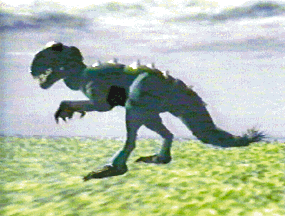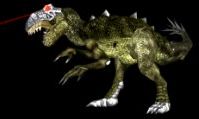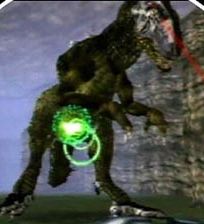The Legend Of Zelda: Majora’s Mask / Gaiden, released for Nintendo 64 as a “sequel” to Ocarina of Time lost some of its original features, including 4 days of the original 7 disappearing from the game, some dungeons, quests and a fishing mini-game (Jabu Jabu fishing) were removed. Yet even so, Majora’s Mask has managed to become one of the best games of the series.
Some more info on the beta development from an interview:
One of the developers for Ocarina of Time, Yoshiaki Koizumi, was not initially involved with the conception of Majora’s Mask, and was working on a different title until he was asked to abandon it. This turn of events resulted in the famous time limit.
Koizumi: That’s what he told us! I remember thinking to myself “That’s not helpful at all!” [Laughs] I’d originally been designing a board game, based around the theme of cops and robbers. I wanted to make it so that you technically had to catch the criminal within a week, but, in reality, you could finish the game in an hour. I figured I’d just throw what I already had into Majora’s Mask.
From Iwata Asks interview for the release of Majora’s Mask 3DS we can read more info on the early differences:
Right. But at first, it was one week.Three days was originally one week?That’s right. But when you returned to the first day it was like “Do I have to go through an entire week again…”, so we thought three days would be just right.Wait, it got decided just like that? (laughs)(laughs) In this game the townspeople do different things each day and many different things happen, but when the timespan becomes a week, that’s just too much to remember. You can’t simply remember who’s where doing what on which day.oreover, you probably wouldn’t have been able to make it in a year if you were aiming to make a game filled with so much content for seven days.ight, we never would have been able to do it. We felt it would be best to make it a three-step process, and we compressed all sorts of things we had planned for over a week into three days.
In an interview by Famitsu with Aonuma we can read some more info about the early development of Majora’s Mask:
Because of the tight schedule, the team needed to solve how to deal with the smaller volume. That’s when Yoshiaki Koizumi talked about a popular movie of that time, Run Lola Run, in which a heroine lives the same time periods multiple times. Koizumi suggested using a similar structure for the game. Originally, the cycle was planned to last a full week, but in that way Majora’s Mask couldn’t be finished in a year. The cycle was changed to contain of a start, a middle, and an end as a result.
In the gallery below you can see some beta screenshots released when Majora’s Mask was announced, with some interesting differences: there was an adult Link mask (later changed into Fierce Deity’s Mask), the instruments used by Deku Link, Zora Link and Goron Link were different, in the screenshot with Epona we can see a breakable wall that is not there in the final game, the moon did not have a face yet, some textures were different and we can notice a room full of skeletons that was completely removed. For more info on the development of Majora’s Mask read this article: Project Zelda 3D – The Development of Zelda 64
Thanks to Nick Bizzozero for the english translation! You can find more info about Zelda: Majora’s Mask in the Zelda Wiki!
Images:
Videos:



